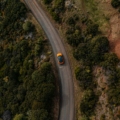Visiting Kaas Plateau in 2025: A Complete Guide to Maharashtra’s Valley of Flowers
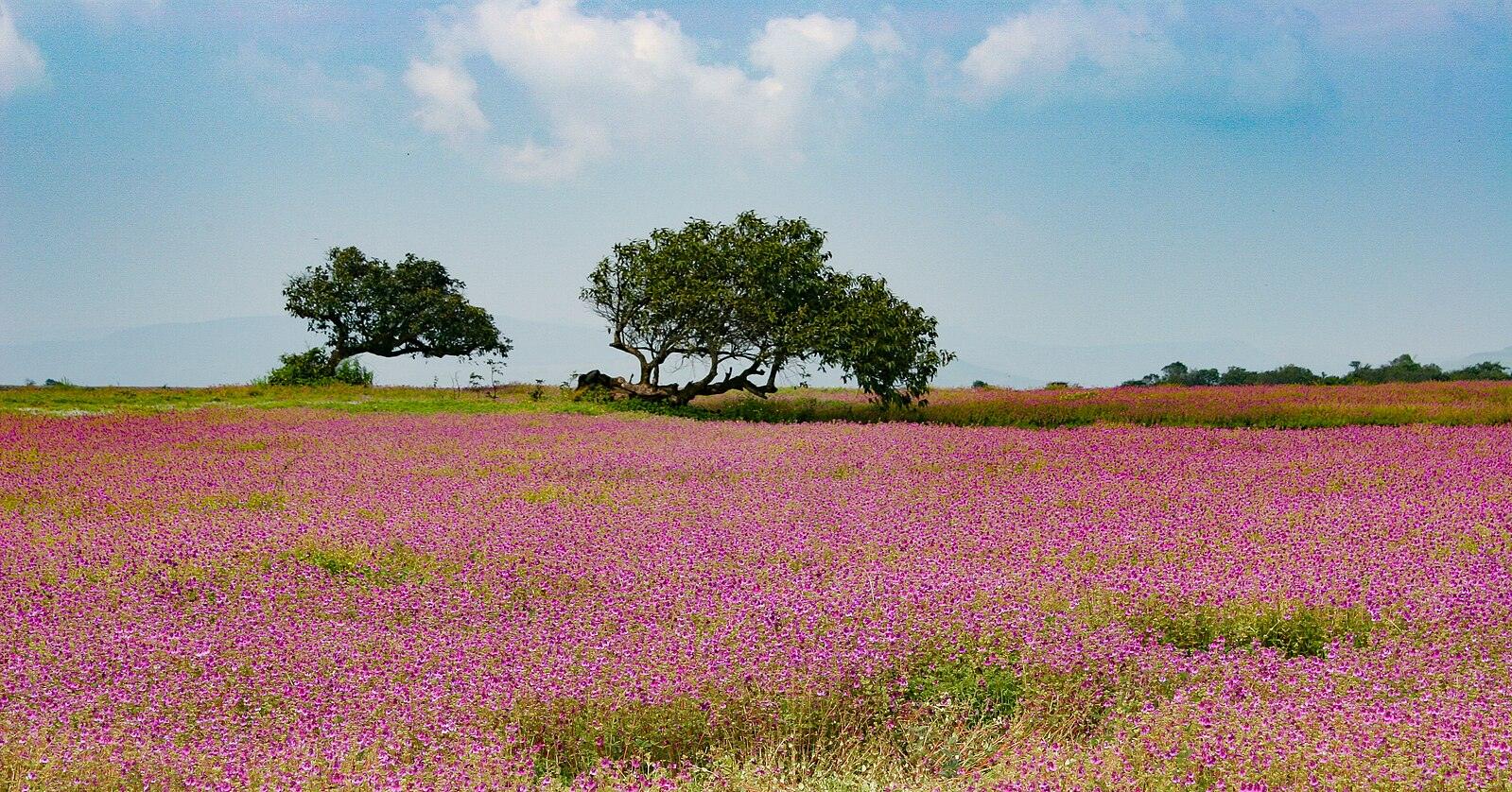
In this Blog
Introduction to the Valley of Flowers
कास पठार, जिसे महाराष्ट्र की वैली ऑफ फ्लावर्स के नाम से भी जाना जाता है, प्रकृति प्रेमियों के लिए एक स्वर्ग के समान है। यह अद्वितीय स्थल अपने जंगली फूलों की विविधता और रंगीनता के लिए प्रसिद्ध है, जो मानसून के मौसम में अगस्त से सितंबर के बीच अपने चरम पर होती है। लगभग 850 से अधिक फूलों की प्रजातियाँ यहाँ पाई जाती हैं, जिनमें से कई केवल इसी क्षेत्र में देखने को मिलती हैं। जब बारिश की हल्की फुहारें पड़ती हैं, तो कास पठार रंग-बिरंगे फूलों के कालीन में बदल जाता है, जो हर किसी को मंत्रमुग्ध कर देता है। यह स्थल न केवल महाराष्ट्र के लिए, बल्कि पूरे भारत के लिए एक प्राकृतिक धरोहर है, जहाँ हर साल हजारों पर्यटक और फोटोग्राफर इसकी सुंदरता को देखने के लिए आते हैं। अगर आप 2025 में प्रकृति के इस अद्भुत चमत्कार का हिस्सा बनना चाहते हैं, तो कास पठार आपके यात्रा सूची में जरूर होना चाहिए।
Why Kaas Plateau Belongs on Your 2025 Travel Radar
Each year, for just a few short weeks, Kaas Plateau — locally known as Kaas Pathar or Satara Kas Pathar — undergoes a dramatic transformation, turning into a vast mosaic of wildflowers under the monsoon sky. Picture thousands of wild blooms — pink, yellow, purple, and white — stretching across a basalt plateau as mist rolls in from the Western Ghats. This is Kaas Plateau at its peak. Perched 1,200 meters above sea level and just 25 kilometers from Satara, Kaas Plateau is one of Maharashtra’s most treasured natural wonders. It is a must-visit for nature lovers, especially those passionate about natural beauty and outdoor exploration.
Recognized as a UNESCO World Natural Heritage Site, Kaas Plateau is often compared to the Himalayan Valley of Flowers — but here, the magic lies in the monsoon mist, the buzz of bees, the earthy smell after rain, and the sight of rare blooms you won’t find anywhere else.
In 2025, the bloom is expected to begin in the last week of August, peak through September, and linger into mid-October. This is the window to plan for if you want to see Kaas in its most spectacular form.
The Best Time to Visit Kaas Plateau in 2025
The bloom season is short, and timing your trip right makes all the difference.
Late August: The first wave of flowers, dominated by whites and yellows like Smithia and Eriocaulon.
Early–Mid September: Peak bloom, when the plateau is awash with pinks, purples, blues, and yellows. This is also the busiest time for visitors.
Late September–Early October: The flowers begin to thin, but the golden grasses and remaining blooms still create a beautiful scene.
Tip: For photography and fewer crowds, aim for early September on weekdays. Mornings (7–11 am slot) often have the best light and a cooler breeze.
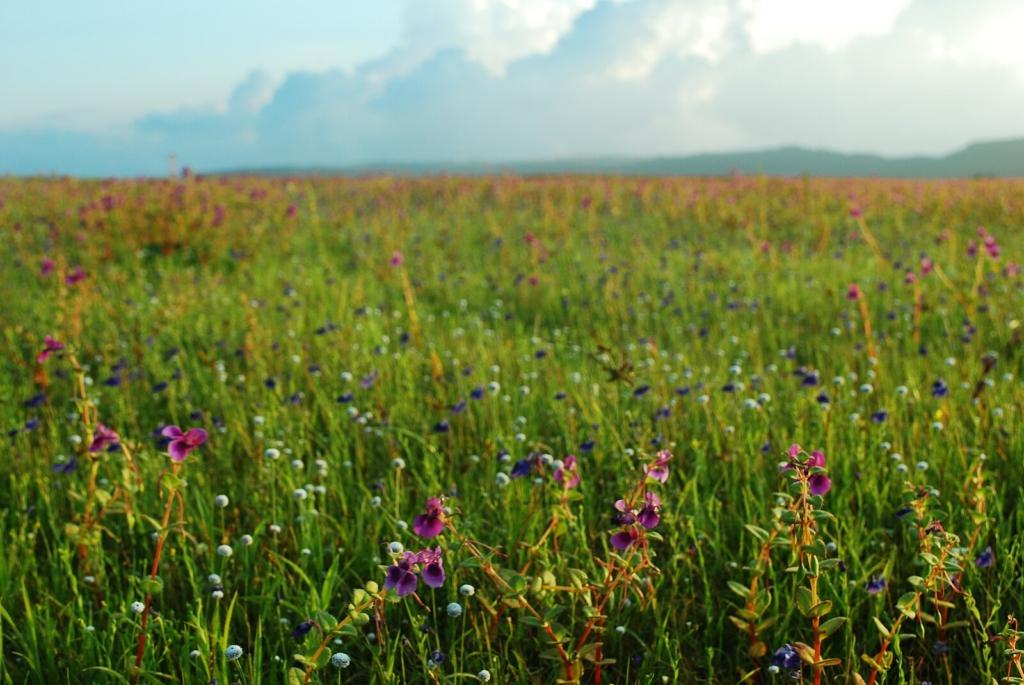
Image courtesy: Janjri via Wikimedia Commons
Booking Kaas Plateau Tickets – 2025 Status & Process
Kaas is an ecologically sensitive zone, and the number of visitors is capped at 3,000 per day, split into three slots:
7:00 am – 11:00 am
11:00 am – 3:00 pm
3:00 pm – 6:00 pm
Current status (2025): As of now, the official booking portal for Kaas Plateau is live for the 2025 bloom season, starting from 24 August. Weekends in September are already filling up quickly, especially the morning slots.
You can book tickets online via the official Kaas Plateau/Satara Kas Pathar website. The entry fee is INR 100 per person, with an optional INR 100 for a local guide who can help you identify rare species. Tickets are non-transferable and checked against your ID at the entry gate.
How to Reach Kaas Pathar
Kaas Plateau lies west of Satara and is easily accessible by road:
From Pune: 125–140 km (3–3.5 hours by car).
From Mumbai: 278 km (5.5–6 hours by car via NH-48).
By Train: Nearest station is Satara; from there, it’s a 45–60 minute drive.
By Air: Pune International Airport (~140 km away) is the closest.
From Satara city, the final stretch to Kaas is a scenic uphill drive, one that you wouldn’t want to miss this year. There’s designated parking with shuttle services to the plateau.
Preparing for Your Visit
अगर आप 2025 में कास पठार की यात्रा की योजना बना रहे हैं, तो कुछ महत्वपूर्ण तैयारियाँ करना आपके अनुभव को और भी खास बना सकता है। सबसे पहले, यात्रा के लिए अगस्त और सितंबर के महीने चुनें, क्योंकि इसी समय जंगली फूल पूरी तरह से खिले होते हैं और मौसम भी सुहावना रहता है। पुणे से कास पठार की दूरी लगभग 140 किमी है, और मुंबई से लगभग 273 किमी, जिससे यह एक शानदार रोड ट्रिप का अनुभव देता है। यात्रा के दौरान सह्याद्रि की घाटियों और हरियाली का आनंद लें, और रास्ते में छोटे-छोटे गाँवों की संस्कृति को भी महसूस करें। कास पठार के लिए टिकट बुकिंग पहले से करना जरूरी है, जिसे आप ऑफिशियल ऑनलाइन पोर्टल से कर सकते हैं। प्रति व्यक्ति लगभग 100 रुपये का टिकट शुल्क है, और अगर आप फूलों की प्रजातियों के बारे में और जानना चाहते हैं, तो लोकल गाइड के लिए भी बुकिंग कर सकते हैं। यात्रा के लिए हल्के कपड़े, वाटरप्रूफ जूते, पानी की बोतल और कैमरा साथ ले जाना न भूलें, ताकि आप इस valley of flowers of Maharashtra की खूबसूरती को पूरी तरह से महसूस कर सकें।
What You’ll See – Flora & Fauna Highlights
Kaas Plateau is home to over 850 species of flowering plants, many endemic to the Western Ghats. Depending on when you visit, you might see:
Smithia (“Mickey Mouse flower”) – bright yellow, cartoon-like blooms.
Utricularia – tiny purple carnivorous plants.
Eriocaulon – clusters of delicate white puffball flowers.
Impatiens lawii – magenta blooms that thrive in damp soil.
Karvy shrub – an elusive bloom seen only once every 7–8 years.
Wildlife includes tiger beetles, butterflies, mantises, Malabar Larks, and occasional small mammals in the surrounding forested areas. Each week of the bloom season changes the plateau’s color palette, making repeat visits feel like entirely new experiences.
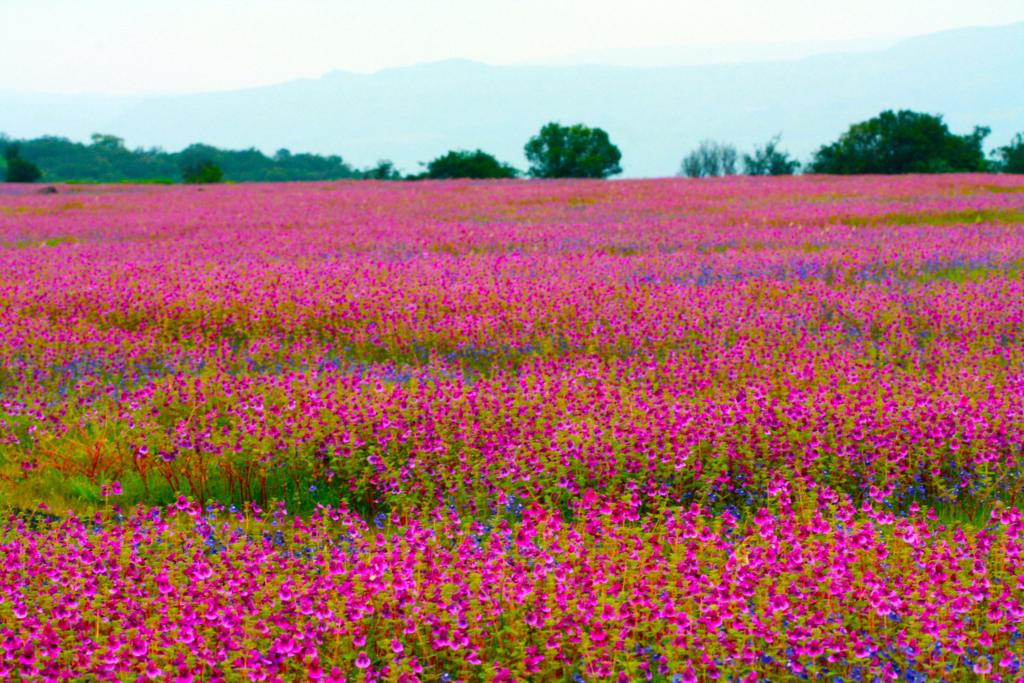
Image courtesy: Tanmay Haldar via Wikimedia Commons
Nearby Delights Worth Adding to Your Itinerary
Visiting Kaas Pathar can be the highlight of a larger weekend escape. Within easy reach are:
Kaas Lake – A quiet spot for a post-bloom picnic.
Bamnoli Village & Shivsagar Lake – Known for boat rides and tranquil surroundings.
Thoseghar & Vajrai Waterfalls – Majestic monsoon cascades.
Sajjangad Fort – A historic fort with panoramic views.
Bhambavli Flower Plateau – A smaller, less crowded alternative to Kaas.
Practical Travel Tips
Book in advance – Weekend slots sell out quickly in peak season.
Choose the morning slot – Best light, cooler weather, and fewer crowds.
Wear good footwear – Waterproof shoes with grip are a must.
Pack light – Carry water, light snacks, a rain jacket, and your camera.
Stay on the paths – Protect fragile plants and avoid fines.
Plan restroom stops – Facilities are available in Satara, not on-site.
Extend Your Trip – Stay Together in a Villa Close By
A visit to Satara Kas Pathar is special, but it can be over in a few hours. To make the most of the journey, extend it into a relaxed weekend by staying in a StayVista villa nearby.
For families, this means kids can explore the villa’s lawns after a day in the flowers. For groups of friends, it’s an evening of shared meals, local delicacies, and stargazing. For couples, it’s privacy, comfort, and a front-row seat to the monsoon mist.
Many StayVista villas around Satara and Mahabaleshwar offer:
- Spacious living and dining areas for group meals.
- Multiple bedrooms for privacy within the group.
- Outdoor spaces to relax, sip chai, and enjoy valley views.
- The option to book local chefs or in-villa meals.
By staying close to Kaas, you can return early the next morning for another slot — catching the blooms in a different light without the rush of a same-day trip.
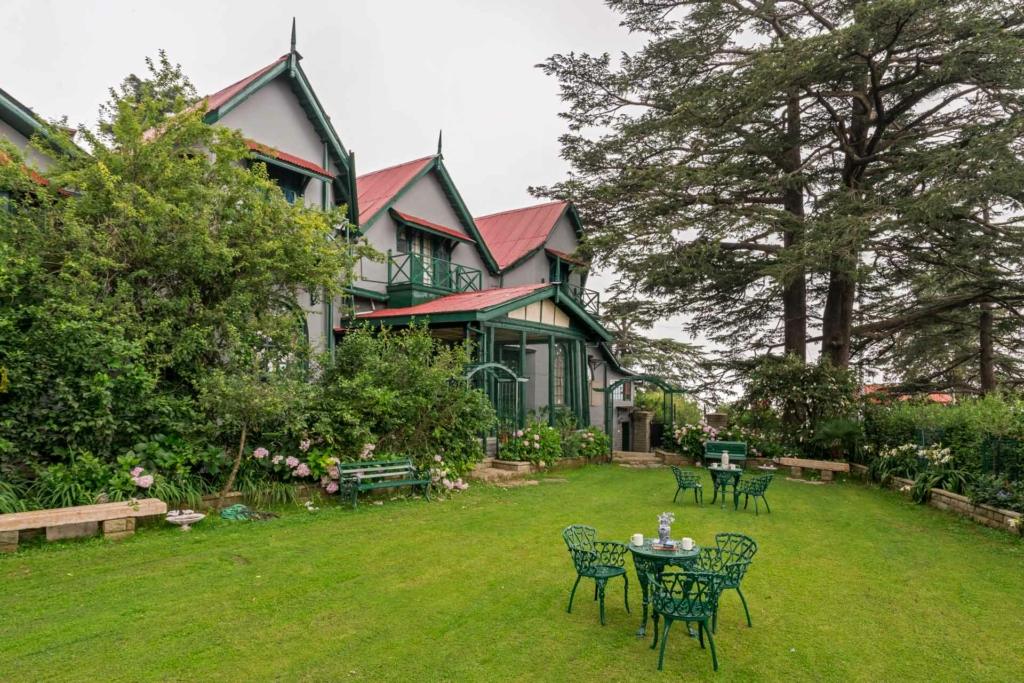
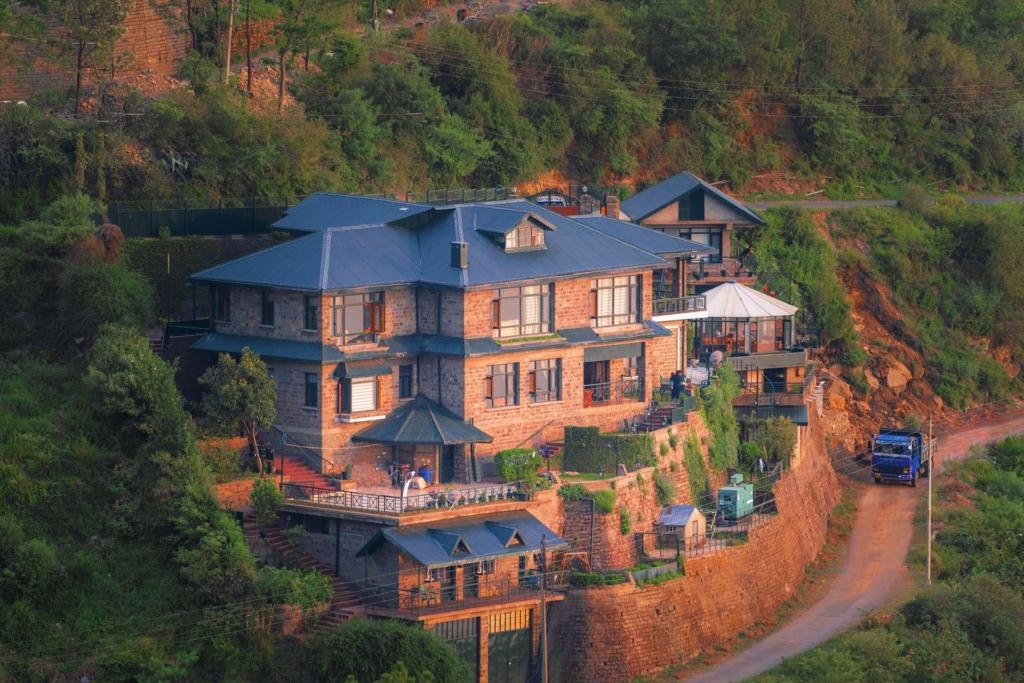
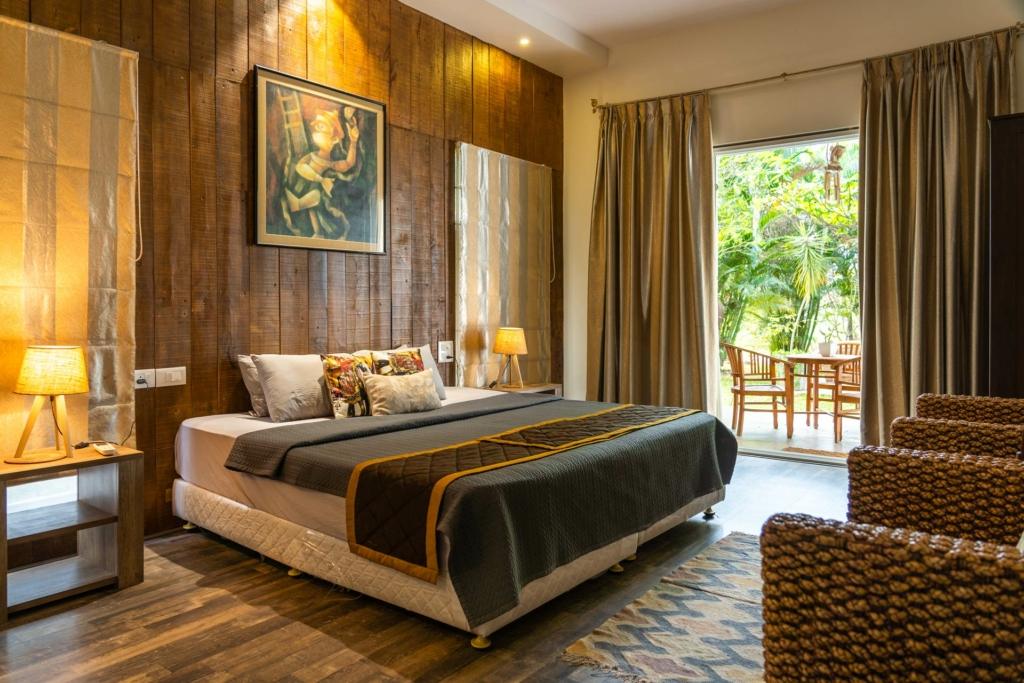
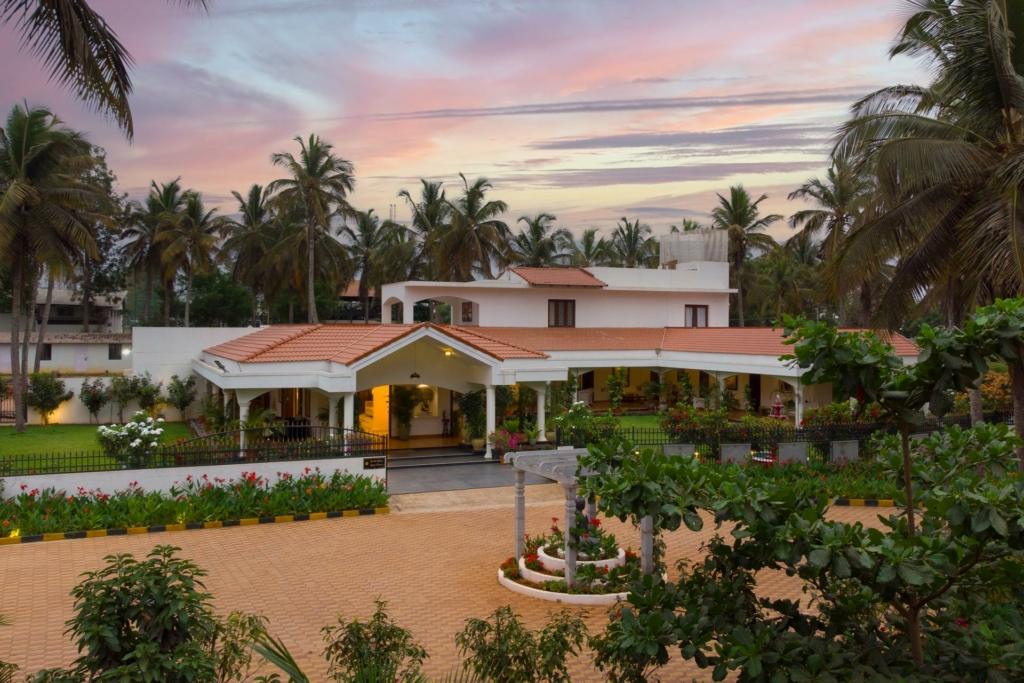

FAQs – People Also Ask
Kaas Plateau will bloom from the last week of August to mid-October 2025, with September as the peak bloom period.
Kaas Pathar is also known as Satara Kas Pathar or Kaas Plateau, Maharashtra’s Valley of Flowers.
Kaas Pathar is located 25 km west of Satara city in Maharashtra, India.
Yes, booking is mandatory through the official Kaas Plateau portal, with daily visitor limits of 3,000 people.
The entry fee is Rs. 100 per person, plus an optional Rs. 100 for a local guide.
The 7:00 am to 11:00 am slot offers the best light, fewer crowds, and cooler weather.
You need about 1–2 hours to explore the marked paths and view the flowers.
Yes, Kaas Plateau is kid-friendly, but children should be supervised as the paths can be slippery in monsoon.
Kaas Pathar is about 125–140 km from Pune and takes 3–3.5 hours by car via NH-48 to Satara.
Over 850 plant species grow here, including Smithia, Utricularia, Eriocaulon, Impatiens lawii, and the rare Karvy shrub.
Yes, photography is allowed, but drones are generally not permitted without special permission.
Yes, only if you book two separate time slots in advance.
Why 2025 Is the Year to Visit Kaas Pathar
The Kaas Pathar is more than just a tourist spot — it’s a short-lived spectacle that demands careful timing and mindful tourism. In 2025, with early blooms expected from August’s end and the booking system already live, now is the time to plan.
And when the flowers fade for the day, retreat to a StayVista villa — a place where you can relive the day’s sights over warm cups of chai, surrounded by friends, family, or the quiet company of someone special. Kaas offers the beauty; the villa makes the memory last.
Banner image courtesy: Parabsachin via Wikimedia Commons





